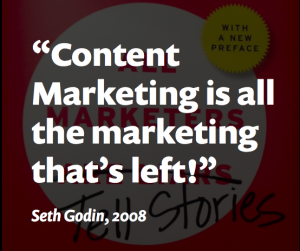Filling a vacancy might be urgent. Sometimes, the temptation to get warm bodies in can be irresistible. However, the costs associated with that one hire can be far greater than you realise. Poor recruitment outcomes might end up costing a business far more than if it had left the position open to find the right candidate. Costs of recruiting the wrong person have been quantified in many HR studies. The wrong hire can result in outlaying up to one and a half times the new employee’s salary, according to a 2014 article.
This is conservative, according to a recent survey by The Australian, quoted in Business Review Australia. This survey found that a bad hire will cost two and a half times the employee’s salary. To demonstrate, for a new employee on a salary of $ 70,000, it calculated that you may need to spend $ 175,000 between the initial recruitment action and the staff member’s eventual departure.
Forbes estimate the costs on a sliding scale — the higher the salary, the more expensive it is to find a replacement.
Zappos’ CEO Tony Hsieh calculated that the poor decisions made by bad hires, compounded by the costs of their bad hires, came to over $ 100 million in the first company he founded.
How to estimate the costs of a poor hire
You can estimate the total investment made in a bad hire by breaking it down into the component parts. Some of these will be direct costs and easily quantifiable, others are indirect costs which can only be estimated. Circumstances will be different according to the size of your organisation and the seniority of the recruit.
The percentages are estimates of an annual salary:
- Wasted salary of up to 6 months (63%)
- Recruitment costs and time (5-40%)
- Training costs (and time) (5-20%)
- Impact on rest of team (5-50%)
- Missed business deliverables (infinite!)
(Source: Manager Foundation)
You can develop a calculator to estimate these costs. By inputting data to estimate costs for each step of the process, you can arrive at a calculation that is based on some real cost it takes to actually bring a new person through the door — the time taken, salary of the staff member involved, and externals rather than your gut. Use the following checklist as a starting point:
- Writing a position brief and associated recruitment paperwork
- Advertising, or otherwise sourcing applicants
- Screening and selecting for interview costs
- Conducting interviews and other skills assessments
- Negotiating contract and waiting for their start date
- Induction and orientation
- Productivity losses eg. supervision, rework, over initial hiring period (3 months).
Let’s dig into a few of the costs of a bad hire to how truly detrimental hiring the wrong person can be.
Time spent recruiting
In traditional recruitment, whether done in-house or outsourced to an agency, significant time is invested by management in initiating a recruitment action: preparing and placing an advertisement, dedicating time for interviews, following up references.
Start-up costs
You’re paying the start-up costs of equipment, training and then the salary of someone who is not meeting your expectations. As time passes, it can be tempting to dig even deeper into your staff development budget in the hope that performance will turn around.
Supervision
A poor hire will require more supervision, bringing them up to speed and monitoring their outputs. Managers whose time is drawn away by a needier employee have less time for their own work and less time to manage other staff who are left to cope on their own. Which leads to the next element of a bad hire: lowering of team morale.
Impact on morale
The energy-sapping effect of a staff member who is not pulling their weight can drag down your whole team. The ripples from hiring a poor cultural fit grow ever larger as the impact is felt across the organisation. And the costs mount. A study from the National Business Research Institute found that 37% of employers said a bad hire negatively affected employee morale.
Aligning cultural fit is now recognised as fundamental. Studies indicate that employers who fail to align their business’s values with the recruitment action, criteria and interview questions may be heading towards a poor match. What are the values in your business? How can you communicate your business culture? Are you publicly promoting it via transparent platforms such as JobAdvisor? If you focus on the tasks alone, you might miss aligning with the strategic vision. If you’re focusing on skills and experience—which are, after all, externally validated credentials—you might be swayed by a convincing interview performance.
Tony Hsieh has learned from his mistakes. In a speech from 2013, he acknowledges how wrong he had been to ignore culture in his first company. Despite hiring all the ‘right’ people in terms of skill sets and experience, he ended up with a toxic culture where even he didn’t want to get out of bed in the morning. If he, as CEO, felt that way, imagine the impact on his staff. Zappos’ logic now is to hire slowly and fire quickly. Hsieh insists on two sets of interviews: one by the hiring manager looking for experience and ability and a second round with human resources who probe for cultural fit.
Reputational cost and severance
Other factors to consider include the cost of reputational damage, and severance. Poor hires can damage a business’s reputation. If the hire is out of step with your organisation’s values and their views become known to your clients or other stakeholders, the damage can be lasting. The study from the National Business Research Institute found that 18% of employers said the bad hire negatively impacted client relationships and 10% attributed it to a decrease in sales.
Finally, there is the cost of letting the poor hire go. The severance for a poor hire can be astronomical. Merissa Mayer’s choice of Henrique de Castro as her Chief Operating Officer ended up costing Yahoo $ 109 million, after a tenure of only 15 months.
Even 15 months is too long for Tony Hsieh. Zappos has a policy of offering staff $ 2000 to leave if they are found to be a poor fit — and usually within a week — which is an innovative way to cap the costs of a poor hire.
Originally published September 13 2016 by Search Party
Business & Finance Articles on Business 2 Community(48)
Report Post






